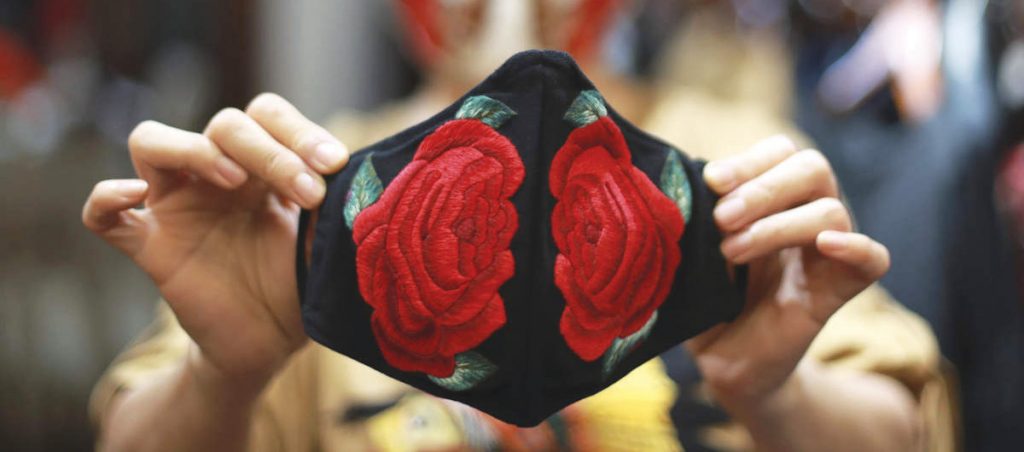McKinsey recently launched a report that highlights how will be the future of fashion industry. It has developed four scenarios, which depend on the interaction of two main elements: the handling of the health situation and the effectiveness of state support for businesses. If both will turn out to be only partly effective, McKinsey is predicting a long, bumpy road to recovery for the fashion and luxury industries. If both elements will instead be well managed, recovery will be faster. If the health situation will be handled ineptly, recovery will be blighted by ups and downs, and if governmental economic policies will be ineffective, recovery will take a linear, but slower path.
Before the Covid-19 crisis, essential purchases accounted for 55% of consumption expenditure. In the crisis’ aftermath, the share of discretionary purchases might drop from 45% to 25%. In addition, global fashion and luxury consumption has been hit by the plunge in tourist expenditure, which has dropped by 80% to 90% depending on the country.
The Mckinsey estimates that revenues for the global fashion industry (apparel and footwear sectors) will contract by –27 to –30 percent in 2020 year-on-year, although the industry could regain positive growth of 2 to 4 percent in 2021 (compared with the 2019 baseline figure). For the personal luxury goods industry (luxury fashion, luxury accessories, luxury watches, luxury jewelry, and high-end beauty), we estimate a global revenue contraction of –35 to –39 percent in 2020 year-on-year, but positive growth of 1 to 4 percent in 2021 (compared with the 2019 baseline figure). If stores remain closed for two months, McKinsey analysis approximates that 80 percent of publicly listed fashion companies in Europe and North America will be in financial distress. Combined with the McKinsey Global Fashion Index (MGFI) analysis, which found that 56 percent of global fashion companies were not earning their cost of capital in 2018, we expect a large number of global fashion companies to go bankrupt in the next 12 to 18 months.
The interconnectedness of the industry is making it harder for businesses to plan ahead. Just as China inched through recovery, outbreaks worsened in Europe and the United States. But it is in the developing world, where healthcare systems are often inadequate and poverty is rife, that people will be hit the hardest.
Economists are keeping a close watch on these variables, while consumers are monitoring their own indicator, personal income. Uncertainty is the name of the game: the majority of consumers surveyed in the study are “unsure” about the future, even in France and Spain, the countries where consumer sentiment appears to be the most pessimistic. At the time of the study, in mid-April, almost four European consumers in 10 expected their income stream to decrease in the near future. And 31% of them said they intended to reduce their expenditure, either a little or significantly.
 Fashion will have to fight hard to grab a share of this dwindling expenditure. Asked about their upcoming purchases in early May, both in-store and online, consumers from the UK, Germany, France, Portugal, Spain and Italy put apparel low on their shopping priorities. Germany appears to be the country least likely to snub
Fashion will have to fight hard to grab a share of this dwindling expenditure. Asked about their upcoming purchases in early May, both in-store and online, consumers from the UK, Germany, France, Portugal, Spain and Italy put apparel low on their shopping priorities. Germany appears to be the country least likely to snub
fashion purchases, while Spain, Portugal and the UK are expected to do the worst in this respect.
This state of affairs is prompting fashion labels to renegotiate terms with their suppliers. Some 71% of them have already done so, aiming to pay less than half the agreed price for their existing orders. In 41% of cases, term renegotiation related to more than half of the order total. Also, 64% of labels have asked for extended payment terms. There will of course be repercussions: over the coming months, brands expect to see a sharp increase in defaults among their suppliers, affecting in their opinion over 50% of producers in the next six months. The domino effect of the crisis is already a reality, affecting both consumer income and manufacturers.
Once the dust settles on the immediate crisis, fashion will face a recessionary market and an industry landscape still undergoing dramatic transformation. The exhibit unpacks five areas that could see significant changes; the full report explores these areas in greater depth.
Now, the resulting “quarantine of consumption”6could accelerate some of these consumer shifts, such as a growing antipathy toward waste-producing business models and heightened expectations for purpose-driven, sustainable action. Meanwhile, some of the shifts we will witness in the fashion system, such as the digital step change, in-season retail, seasonless design, and the decline of wholesale, are mostly an acceleration of the inevitable—things that would have happened further down the road if the pandemic had not helped them gain speed and urgency now.
The coronavirus also presents the fashion industry with a chance to reset and reshape the industry’s value chain completely—and an opportunity to reassess the values by which it measures actions
This will also be a time for collaboration within the industry—even among competing organizations. No company will get through the pandemic alone, and fashion players need to share data, strategies, and insights on how to navigate the storm.

SOME FACTS
- Share of discretionary purchases might drop from 45% to 25%.
- Mckinsey estimates that revenues for the global fashion industry (apparel and footwear sectors) will contract by –27 to –30 percent in 2020 year-on-year, although the industry could regain positive growth of 2 to 4 percent in 2021
- If stores remain closed for two months, McKinsey analysis approximates that 80 percent of publicly listed fashion companies in Europe and North America will be in financial distress.
- The majority of consumers surveyed in the study are “unsure” about the future, even in France and Spain, the countries where consumer sentiment appears to be the most pessimistic.
- Both in-store and online, consumers from the UK, Germany, France, Portugal, Spain and Italy put apparel low on their shopping priorities. Germany appears to be the country least likely to snub fashion purchases, while Spain, Portugal and the UK are expected to do the worst in this respect
- The coronavirus also presents the fashion industry with a chance to reset and reshape the industry’s value chain completely—and an opportunity to reassess the values by which it measures actions.
- In early May, both in-store and online, consumers from the UK, Germany, France, Portugal, Spain and Italy put apparel low on their shopping priorities. Germany appears to be the country least likely to snub fashion purchases, while Spain, Portugal and the UK are expected to do the worst in this respect.



